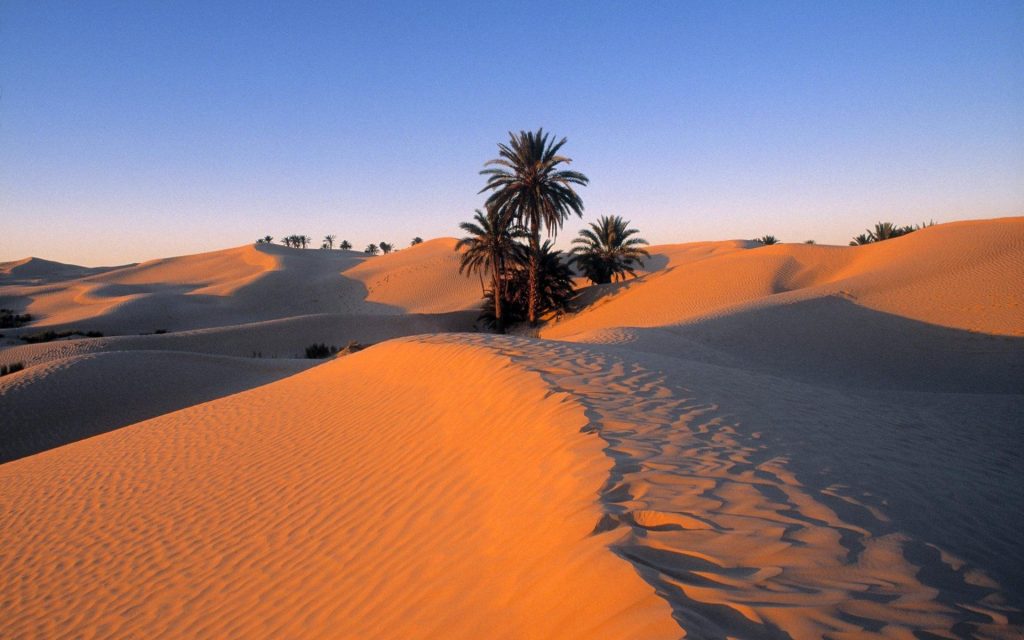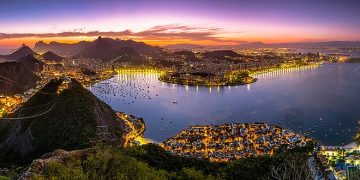In the northern part of the African continent lies a vast desert – the Sahara Desert, which is not only the largest tropical desert on Earth, but also a miracle shaped by nature and human history. With its unique geographical location, extreme climatic conditions, rich natural landscape, profound historical and cultural heritage and complex social problems, the Sahara Desert attracts the attention of countless explorers, scientists and tourists. The purpose of this paper is to explore in depth the multiple dimensions of the Sahara Desert, including its basic information, historical background, cultural characteristics, social issues, tourism value, and importance in terms of sustainable development and ecological protection.
- Basic information about the Sahara Desert
1.1 Geographical Location
The Sahara Desert, which means “Great Desert” in Arabic, is located south of the Atlas Mountains and the Mediterranean Sea, from the Atlantic coast in the west to the shores of the Red Sea in the east, spanning many countries in the northern part of the African continent, including Egypt, Sudan, Libya, Chad, Tunisia, Algeria, Niger, Mali, Mauritania and Morocco. This desert is 5,600 kilometers long from east to west, about 1,600 kilometers wide from north to south, with a total area of about 9.1 million square kilometers, accounting for about 32 percent of Africa’s total area and almost one third of the entire African continent.
1.2 Climate Characteristics
The climatic conditions of the Sahara Desert are extremely harsh, mainly reflected in the following aspects:
Dry: The average annual precipitation is less than 100 mm, most areas have no rain throughout the year, and the air is extremely dry.
High temperature: the summer temperature is often as high as 40 ° C or more, the surface temperature can even reach 50 ° C, and the night temperature is relatively high.
Large temperature difference: the temperature difference between day and night is very large, the heat is unbearable during the day, and the night is rapidly cooled to below 5℃ due to the lack of surface cover.
Wind sand: Due to the lack of vegetation cover, the sand in the desert is easily blown by the wind, forming a large area of wind sandstorms.
1.3 Natural landscape
The terrain of the Sahara Desert is extremely rich, from towering dunes to vast sand seas to occasional oases, forming a unique picture of natural landscape. Among them, the most famous are those huge sand dunes, such as “red sand dunes” and “white sand dunes”, which shine under the sunlight and become a beautiful landscape in the desert. In addition, the occasional oasis in the desert brings vitality and hope to this forbidden area of life. The vegetation and water in the oasis not only provide living conditions for local residents, but also become an important supply station for explorers and travelers.

Second, the historical background and cultural characteristics of the Sahara Desert
2.1 Historical Background
The formation of the Sahara Desert has experienced a long historical process, and its evolution is influenced by geological movement, climate change and ecosystem evolution. During the Paleozoic period, the Sahara region had a humid climate with vast shallow seas and abundant coral reefs. With the crustal movement and climate change, the region gradually turned to drought, and the desertification process intensified, and eventually formed today’s Sahara Desert. In the process, the climate of the Sahara region has undergone significant changes several times, with profound effects on local ecosystems and human civilization.
2.2 Cultural Characteristics
Despite extreme environmental challenges, the people of the Sahara Desert region have created a rich and diverse cultural heritage. The Saharan culture is a mixture of diverse religions, nationalities, customs and traditions, which represent the unique charm of the African continent. The people of this region are divided into different ethnic groups and tribes, such as Tuareg, Arab, Berber, etc., each with its own unique cultural traditions. The origin of Saharan culture can be traced back to the Paleolithic Age, when people began to settle in the Sahara region, with the change of climate, residents gradually adapted to the arid desert environment, and developed a unique way of living and civilization.
In terms of architectural style, fra and Tulg are the two most representative architectural forms in the Sahara region. The Fra buildings, with their domes and semi-underground structures, are adapted to the high temperature and dry environment, while the Thurg buildings, with their solid facades and exquisite decoration, show the wisdom and creativity of the Saharan people. In addition, Saharan art and cultural traditions are also very rich, rock paintings, murals, pottery, metal crafts and other important forms of expression of Saharan culture. These artworks not only record the living scenes and natural scenery of the residents at that time, but also reflect the profound heritage of Saharan culture.
2.3 Social Problems
The social problems of the Sahara Desert region are complex and diverse, mainly including the challenges of survival in extreme climatic conditions, geopolitical tensions and the threat of terrorism and illicit trafficking. High temperatures, drought and water scarcity are the main existential challenges facing the region’s inhabitants, who have to rely on limited water sources and farmland for their livelihoods. At the same time, the Sahara Desert region involves many countries’ border issues and resource contention, such as the sovereignty dispute between Morocco and Algeria over Western Sahara, which has long plagued regional stability and development. In addition, terrorism and illegal trafficking are also rampant in this region, bringing huge security risks to local residents and neighboring countries.
The tourism value of the Sahara Desert
3.1 Natural landscape
The unique natural landscape of the Sahara Desert is one of the important factors attracting tourists. Towering dunes, vast sand seas, and occasional oases provide visitors with an unparalleled visual experience. Walking in the desert, riding a camel or riding an off-road vehicle through the vast sand sea, feeling the magnificence and mystery of nature, has become a dream trip for many explorers and travelers.
3.2 History and Culture
The rich historical and cultural heritage of the Sahara Desert region is also one of its important tourism resources. Scattered in this desert are many ancient sites and relics, such as pyramids, stone columns, rock paintings, etc., which are the witnesses of human history and the treasures of desert culture. By visiting these sites and relics, visitors can gain an in-depth understanding of the historical changes and cultural inheritance of the Sahara region, and feel the glory and vicissitudes of ancient civilization.
3.3 Folk Customs
The folk customs of the Sahara Desert region also have a unique charm. The way of life of local residents, traditional customs and folk art are important ways for tourists to experience African culture. In places such as the Tuareg Market, visitors can buy colorful tapestries, exquisite pottery and jewelry and other handicrafts, and feel the unique charm of African culture. In addition, participating in local festivals and folk activities is one of the important ways to learn about Saharan culture.
Sustainable development and ecological protection of the Sahara Desert
4.1 Importance
As one of the largest tropical deserts on Earth, the sustainable development and ecological protection of the Sahara Desert are of great significance to maintaining global ecological balance and promoting regional development. On the one hand, the climate change and environmental conditions of the Sahara Desert have an important impact on the global climate system. On the other hand, ecological protection and sustainable development in the region play a key role in promoting local economic and social development and improving residents’ living conditions.
4.2 Challenges Faced
The Sahara Desert faces many challenges in terms of sustainable development and ecological protection. First of all, extreme climatic conditions have brought great difficulties to ecological protection and restoration. Secondly, the worsening of desertification process leads to the deterioration of ecological environment. Third, human activities, such as overgrazing and overmining, have also caused damage to the ecological environment. Finally, geopolitical tensions and the threat of terrorism also pose security challenges to ecological conservation efforts.

4.3 Suggestions and Measures
In order to promote the sustainable development and ecological protection of the Sahara Desert, the following recommendations and measures can be taken:
Strengthen international cooperation: Countries should strengthen cooperation and exchanges in such fields as climate change, ecological protection and counter-terrorism to jointly address the challenges facing the Sahara Desert region.
Promote ecological governance: Increase investment in desertification control and ecological restoration, and adopt scientific methods and technical means to promote ecological governance. For example, through afforestation, vegetation restoration and other ways to improve the desert ecological environment.
Development of green economy: Encourage and support the development model of green economy, such as the development of clean energy, the promotion of ecological agriculture, etc., to reduce excessive dependence on and destruction of natural resources.
Strengthen publicity and education: Strengthen environmental publicity and education for local residents and tourists, and improve public awareness and participation in environmental protection. Through environmental protection activities, environmental education and other ways to guide people to pay attention to ecological protection issues.
Improve laws and regulations: Establish a sound system of laws and regulations, and increase penalties for illegal acts. Through the formulation and improvement of relevant laws and regulations to regulate human activities and protect the ecological environment from destruction.
V. Conclusion
As one of the largest tropical deserts on the earth, the Sahara Desert attracts the attention of countless people with its unique geographical location, extreme climatic conditions, rich natural landscape and profound historical and cultural heritage. However, while appreciating its magnificence and mystery, we should also pay attention to the many challenges and problems facing the region. By strengthening international cooperation, promoting ecological governance, developing green economy, strengthening publicity and education, and improving laws and regulations, we can jointly promote the sustainable development and ecological protection of the Sahara Desert, and leave a better home for future generations.





















